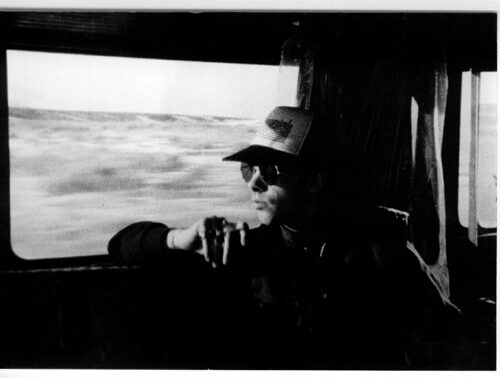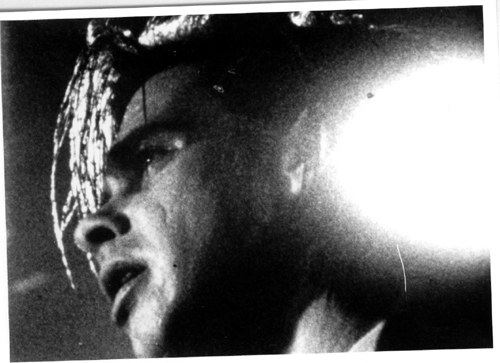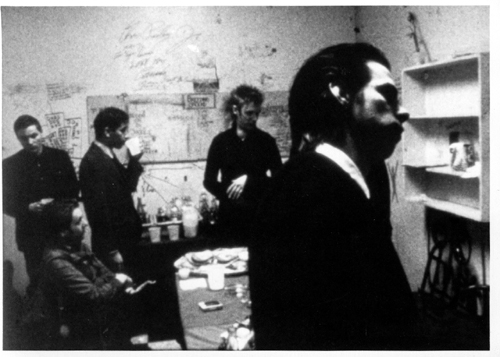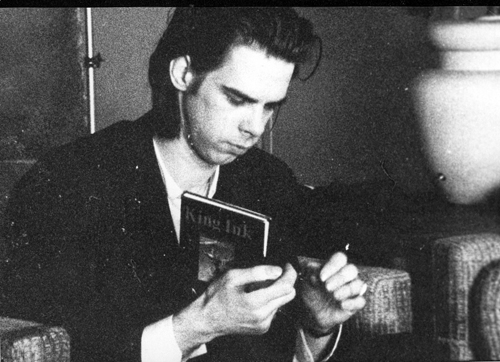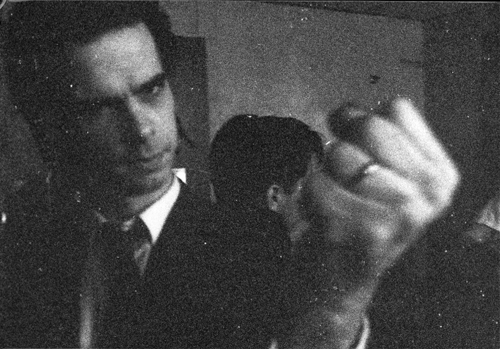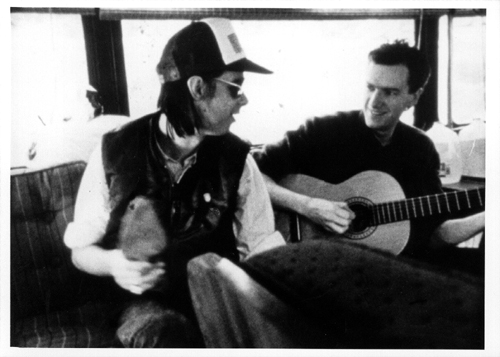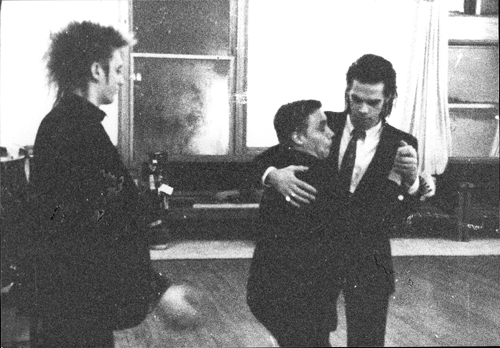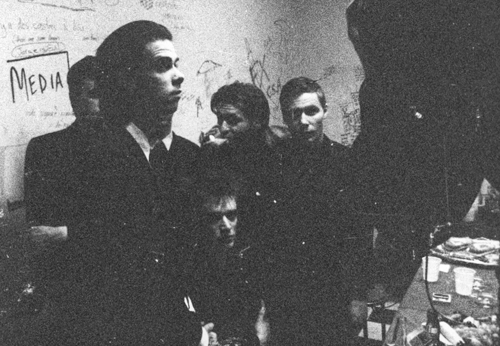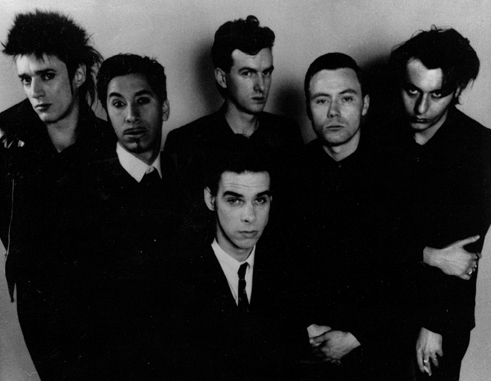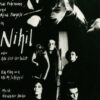THE ROAD, to God Knows Where
A film by Uli M Schueppel
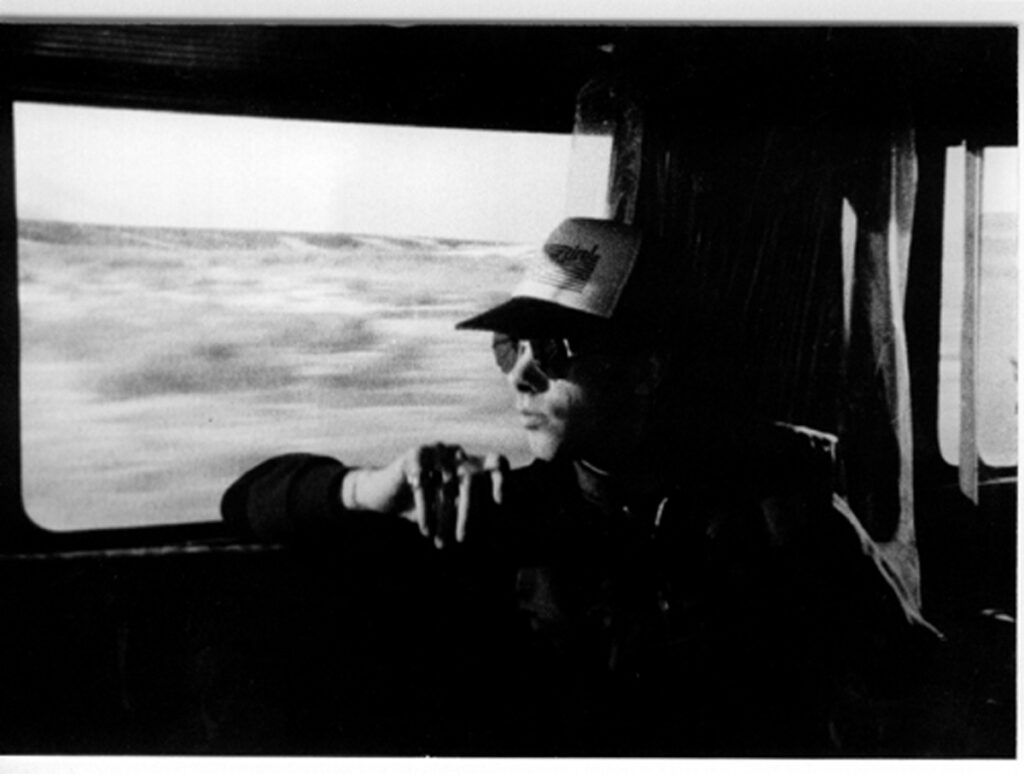
FESTIVALS: Melbourne, Copenhagen, New York, Montreal, Manchester, Barcelona
“The Road, to God…” can be watched directly NOW HERE as Vod-stream!
THE ROAD, to God Knows Where from schueppel-films on Vimeo.
Nick Cave: “This film is beautiful, because it’s so sad. And that is true.”
What can one say of a documentary, that the documentary, by definition, doesn’t say for itself? The answer to this question could be found in those events which either surprise by their presence or confuse by their absence – a confounding of expectations. But would this not simply de-mystifying what is the essence of the art?
With “The Road to God knows where” german director Uli M Schueppel set out on a five week odyssey of the USA with Nick Cave & The Bad Seeds with never a thought of making just an income generating, concert video, side-order to the groups recording career. Schueppel was primarily interested in the six personalities involved (knowing, as he4 did, all of them personally) and in studying these individuals and the environment in which they often find themselves together.
What he expected was not exactly what he got, but what he got was just what he wanted. The result is a far cry from the usual rock’n roll lifestyle cliches and slick life productions of the average music biz “film”.
Armed with only one 16mm-camera and an assistant with cassette machine, Schueppel offers up a disarmingly frank and intimate look at these characters and their “behavioural sink”. That it will confound people’s expectations of them is without question – Truth is stranger than Fiction.
We may well ask, where “The Road to God knows where” takes us and of course the answer is the question. We are all on the road to God knows where, so hitch a ride with Cave & Company for a leg of the journey and experience what would otherwise be a vehicle speeding by you on your long hike to oblivion.
Readers & writers of the american TOTAL FILM MAGAZINE (May08) voted THE ROAD, To God Knows Where “in the 20 best band films of all time”.
“Uli M Schueppel was still a student at the Berlin Film Academy when he conceived this project – the documentation of a Noth American tour by cult figure Nick Cave and his band of underground legends The Bad Seeds. Schueppel’s plan was to record the routines behind the glamour – the 23 hours of the day, when the band is not pölaying – that makes up the daily scheduleof a touring performer. Schueppel goes out of his way to avoid making a “concert film”, while allowing just enough snippets of the band’s live performances to filter through, so as to give even the uninformed viewer a sense of The Bad Seeds work. Using just a two-person crew, the director has been able to infiltrate every imaginable moment of the band’s days (and nights) without ist presence obstructing the action. The result of this approach is the gradual demystification of the celebrity lifestyle that other media (and the stars) usually perpetuate. Yet just as these details accumulate and are transformed into mundane daily ritual for the performers, so too does the process become ever more fascinating for the viewer. THE ROAD… is a voyeur’s delight, packed with incidental detail and absurd fleeting moments to treasure, as these glum ministrels head on down the road, to god knows where.”
(Melbourne Filmfestival, 1990)
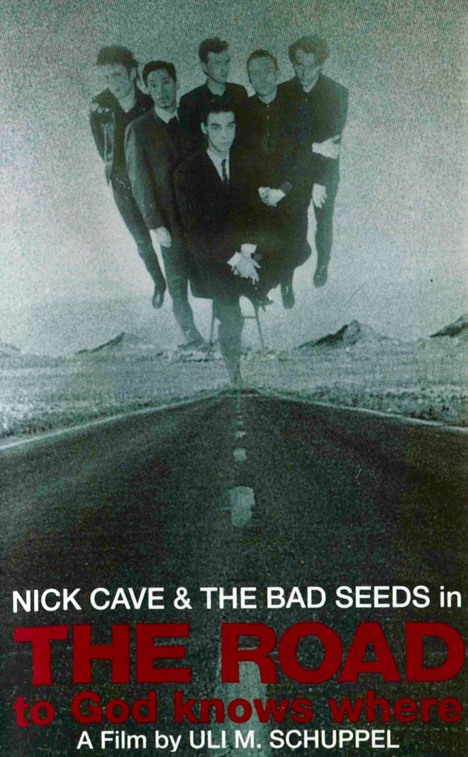
Press Quotes
Selection of the 20 best music documentaries of all times:
„No.13. “The Road to God Knows Where” (1990)
The recent Nick Cave documentaries (…) showcase a mature and reflective artist. For unsparing grit and grime, there’s Uli M Schueppel’s black-and-white film of the Bad Seeds’ 1989 US tour, heavy on the boredom and frustrations of life on the road.“
„The Guardian“ (Sept. 20th, 2018)
“Rockn’roll life on the road has rarely been so accurately documented as this. Yet, despite the noblest efforts of director Uli M Schueppel to demystify the process, Cave and the chaps just can’t help being glamorous. THE ROAD… is classic cinema verite, a tremendously evocative documentary for anyone who’s ever been involved either on the fringes or in the heart. … this hyper-grainy b&w film is a lovingly detached testament to the absurdity of the ritual.”
Melody Maker (Nov 90)
“A portrait of Nick Cave and his band in gorgeous black and white – with the feel of a road movie. Director and cameraman Uli M Schueppel is a longtime friend of the musician, probably only a friend could posses such a great sensitivity and fine touch. THE ROAD is one of the few ‘music films’ that is nit only worth seeing for fans, but, like Godards ‘One Plus One’, is also for film buffs.”
Journal Frankfurt (12/90)
“What is life? A street, a journey, work, reality, myth. And what can be life, reality in film? It’s about everyday things. Nothing is stressed, emphasised, each action is part of a whole, of the same importance as the ‘empty’ moments. Part of the atmosphere. That’s what makes THE ROAD… a film in which one is so naturally at home.”
Der Tagesspiegel (12.5.1990)
“This quiet, melancholy film reveals through its poetic imagery more about Nick Cave’s personality than the longest interview.”
taz (21.5.1990)
“THE ROAD… is a documentary film that truly earns this appelation.”
TIP (11/90)
(…) Herausgekommen ist dabei ein sehr ruhiger, trister, ernster Schwarzweiß-Film, der nichts mit den üblichen bunten, schnell geschnittenen Konzertfilmen a la ‘Talking Heads’ gemeinsam hat.
Uli M Schueppel fängt ganz wunderschöne poetische Momente ein: (…) ‘The Road…’ stellt keinen herkömmlichen Musikfilm dar, der Mythos Rock n’ Roll (…) findet nicht statt. Die Produktion ist eher ein subtiles Portrait einer zerbrechlichen Persönlichkeit und einer erwachsenen Band.
Film-Echo Filmwoche, B. Herdlitschke, Nr.21/90
“The film captures beautiful poetic moments. THE ROAD… is the subtle portrait of a fragile personality and a growing band.”
Film-Echo/Filmwoche (No21/90)
credits:
The Band:
SINGER Nick Cave
BASSIST Mick Harvey
GUITARRIST Blixa Bargeld
DRUMMER Thomas Wydler
GUITARRIST Kid Congo Powers
PIANIST Roland Wolf
TOURMANAGER Rayner Jesson
GUEST Lydia Lunch, Foetus, u.v.a.
Team:
SCRIPT, DIRECTOR, CAMERA Uli M Schueppel
EDITING Frank Behnke
SOUND Lucien Segura
SOUNDMIX Martin Steyer
PRODUCTIONMANAGER Milanka Comfort
LINE – PRODUCER Verity White
PRODUCER Mick Harvey
Uli M Schueppel
PRODUCTION Mute Films (London)
Schueppel-Films (Berlin)
German Film- und Television- Academy Berlin (dffb)
Uli M Schueppel on the shooting of “The Road …”
„An eye for an eye
And a truth for a truth
And anyway I told the truth
But I’m afraid I told a lie…“
(„The Mercy Seat“, N. Cave)
At the beginning, one thing was clear to me: I didn’t want to make any of those music films that have bored me in theaters for years. Rhythmically fast cut glossy picturs of monumental concerts or highly stylized myths of musicians and their oh-so-eccentric reality. In them the film and its imagery are raped as an advertising medium for products (the film to the record, etc.).
For me it was about the highest possible degree of authenticity, as far as this can be “foreseen” with the camera in front of my eyes. Thanks to our two-man team, the renunciation of additional lighting and, last but not least, my long-term friendship and the trusting relationship with the musicians, this was largely possible.
So that everyone doesn’t fall into the poses known from “family photos” while the camera is running, I had made a habit of almost never taking the heavy 16mm camera off my shoulder and actually only observing it through the viewfinder. After just a few days, the camera was no longer perceived as a part of my body and thus by the musicians as a voyeuristic instrument. With me, however, the opposite happened. There was an unexpected permanent schizophrenic struggle. Again and again I had to redefine the boundary between the private and the public for myself. For example, there was the situation every evening after the concert, when Nick and the band had given themselves to the audience with one hundred and twenty percent intensity. They came backstage, ready to let go, without a thousand pairs of eyes looking at them. And I sat in the corner with the lens pointed at them, which represented ten thousand pairs of eyes …
There were many of these private, meaningful situations that I really wanted to capture for the film, but in which, as a person (and friend), I would have preferred to have been sensitive enough to leave the group alone at precisely these moments. I responded very intuitively with the camera. When I was very close, I tried to use the wide angle to build up some distance. This surprised me, given my preference for close-up shots, and I actually only became aware of this after my return to Berlin, when I was able to view the material for the first time.
During these five weeks the group didn’t restrict my shooting once or ask me to leave them alone. Almost unbelievable. I don’t know if I could have endured if I were them.
When I showed Nick the finished film in London, he said at the end:
“It’s beautiful, because it’s so sad. And that is true! “
Excerpts from an interview with Uli M Schueppel for “The Road …” – press booklet (Aug.1990)
– about the making of the film
Two years earlier, I saw the Pennebaker film about Bob Dylan with Blixa, “Don’t Look Back”. The best music film – ever! I thought, why not some kind of remake of a documentary? Has there been anything like this before? Blixa said, we should do something like that with “Einstürzende Neubauten”. We had that in our heads for a long time, but there was no budget and no real kick, and, and … At some point Mick Harvey called me, “Okay, I have the money. We do that with Nick and the Bad Seeds ”.
The band wanted the film. They asked me and then gave me every freedom. Both when shooting and in post-production.
The media put Nick Cave into this goth myth. The image of the fans was only a shadow projection of what the band is like, namely serious musicians who do not correspond to any fashion.
We tried to stick with the personalities, to show that they are stars, but also “normal” and smart characters.
– the relationship with the band
I’ve been friends with Blixa for ages. We wrote the script “The Sandman” (89 – never realized …) together, and in 1986 he played the one-armed visionary in my first feature film “Nihil, or All the Time in the World”. I wrote the script for it sitting in a corner in the Hansa studio while Nick was recording the record “The Funeral, My Trial” with Bad Seeds.
With Nick and the members of the band, I had spent a lot of time in two places in the early 80s: The “Gift”, a fashion and record store in Kreuzberg, and of course the “Risiko” nightclub.
Nick writes all the lyrics and most of all the music. He is the head. I appreciate this friendship in the group, the respect for each other and the feeling that there is a singer and the others keep his backs free.
There is a real kinship between film and music. Nick always talks about people that he describes exactly and characterized by the details. They are stories, and of course that always has a lot to do with film.
– to the result of the film
I then invited them to Berlin, showing them a 4 hour rough cut, and asked if something bothers them.
We discussed a few points hard. There is, for example, Nick’s outburst of anger, when, angry about the bad system, he says: “Okay, then I won’t play!” And leaves. Nick thought, that he was only very rarely like that, that it was completely atypical for him. But I fought to let it in, because I found it understandable when someone takes his music, his art seriously.
But in the end there was nothing that was too private for them. That was probably due to my preselection or even the choice of material that was filmed. Of course I didn’t want to show Nick taking off his pants or brushing his teeth after the concert …
Their first reaction was that they thought the film was incredible, authentic. They didn’t expect a film to be able to show and empathize with what really happened. Well, there is nothing dramaturgically exaggerated, but nothing is left out either – it’s just the mood and atmosphere of this one USA tour 1989.
– to the expectations before the tour
I don’t know what kind of picture I had before. It was the first tour I went on. Maybe I imagined it to be incredibly sensational, full of scandals and everything you read in music magazines: the hotel rooms are being devastated, wild drug excesses, and then the thousand groupies in the room in the evening. Well, I didn’t experience that like that.
– on the concept of the film
Our interest was not only to show rock stars, but to observe musicians in their everyday situations and make them tangible for others.
In the first third you look for orientation. That doesn’t suit the viewer dramatically, but I wanted to show the reality of the start of the tour. So the tour designed itself. Nothing was found in the first few days, there were only incoherent scraps of reality. You have to imagine that the musicians from four different countries arrive, meet briefly in the hotel bar, have a sound check, then the first concert comes, you’re on the bus, and that’s how the first five to six days work out. Chopped off blocks stand next to each other.
The rhythm of the film should reflect the movement of the tour. I didn’t want any recognizable skylines from this or that city, because we hardly noticed the places either. No orientation.
I wanted shot lengths that correspond to real time, few cuts, and thus give the viewer the opportunity to experience something, to give them time to empathize. There are shots, that are almost five minutes long. Situations and atmospheres with Nick are shown without words, which certainly say more about him than what he says in interviews.
